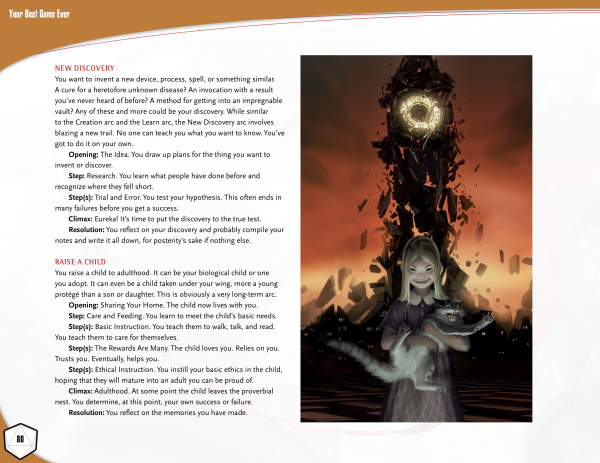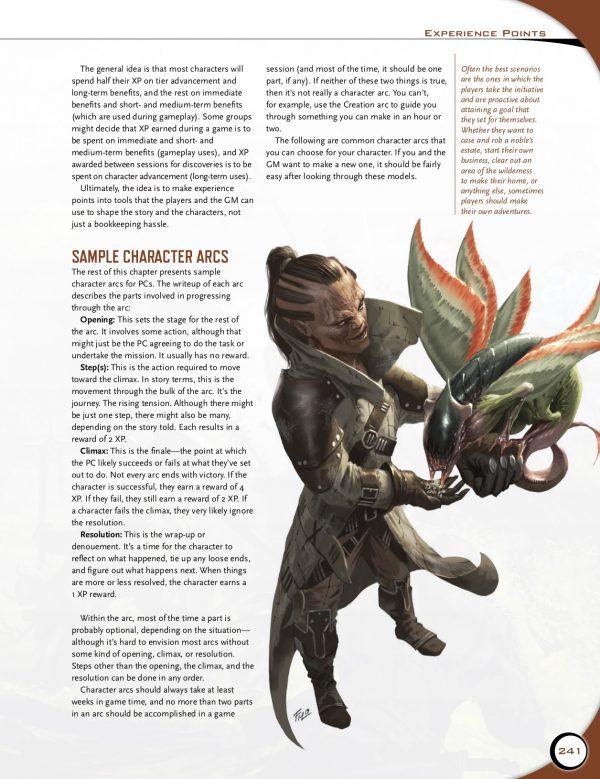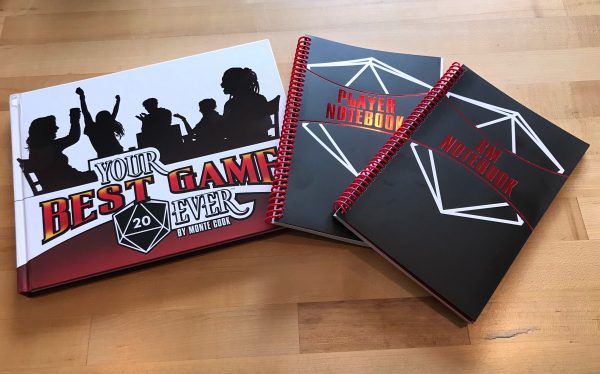You can integrate character arcs, as seen in Invisible Sun, into any RPG you might play! Simply crack open your copy of Your Best Game Ever and it will walk you through the process.
Read the excerpt below to find out more.
Character Arcs
Character arcs can bring more great stories and more character depth and development to your game. They’re appropriate for campaign play, but probably not for a one-shot game.
Just like in a book or a television show, characters in a game progress through their own personal stories and change over time. Rather than following a quest given by an NPC, a PC with a character arc decides for themselves what they do and why. Character arcs are like stated goals for a character, and by progressing toward that goal, a character advances. The key word there is progressing. You don’t have to achieve the goal to earn advancement—it’s not an all-or-nothing prospect. Each arc is keyed to a single character, but just like in a book or TV show, each character can take part in the larger story arc that the whole group participates in, while also progressing in their own personal arc.
This section presents sample character arcs, but you can create your own too. These examples are intentionally broad to encompass many different characters and stories. For example, “Revenge” is a very simple and straightforward character arc. (“Hello. My name is Inigo Montoya. You killed my father. Prepare to die!”) The player who chooses this arc for their character decides who they want revenge on and why. It’s up to the players and the GM to make the details fit.

Using Character Arcs for Advancement
To use character arcs, you need to convert them to whatever reward system your game uses. This might take a little approximation on your part. Consider what a character typically earns in a single game session. Think of this as a “small reward” and double that as a “large reward.” For example, if a character in your game earns 1,000 experience points on average per session, you can think of references in the following material to a “small reward” as being about 1,000 experience points and a “large reward” as being 2,000 experience points. If, however, your game doesn’t use that kind of system and (for example) allows players to increase two or three skills after a session, consider that a “small reward.” Increasing four or five skills might be a “large reward.”
Taking a new arc has a cost in terms of this kind of advancement reward. In a session where the character adopts a new arc, simply have them forgo whatever reward they would have earned that session, if applicable.
Going forward, use the rewards that come from character arcs rather than experience points or whatever system your game normally uses. In other words, progressing through character arcs becomes the way characters advance.
This section of Your Best Game Ever goes on to detail the use of character arcs, followed by a list of example arcs that you can draw from. How will you use character arcs in your game?
Of course, you’ll find this character arc system baked right in to the Cypher System Rulebook!

